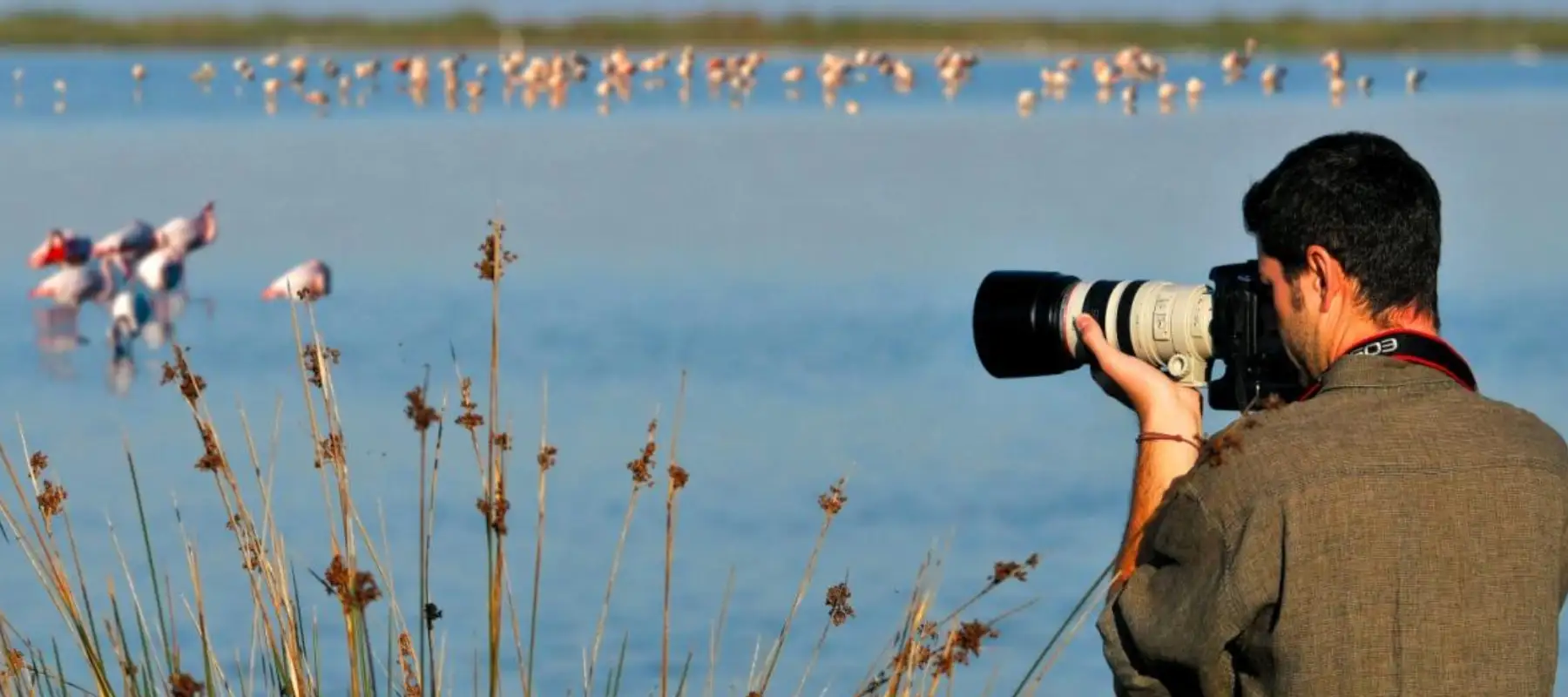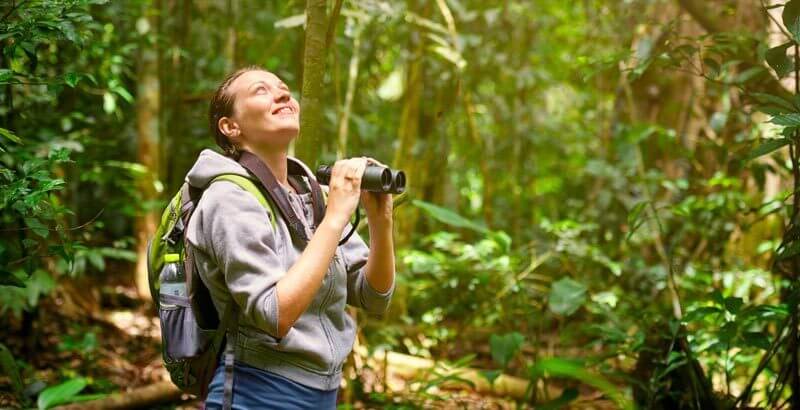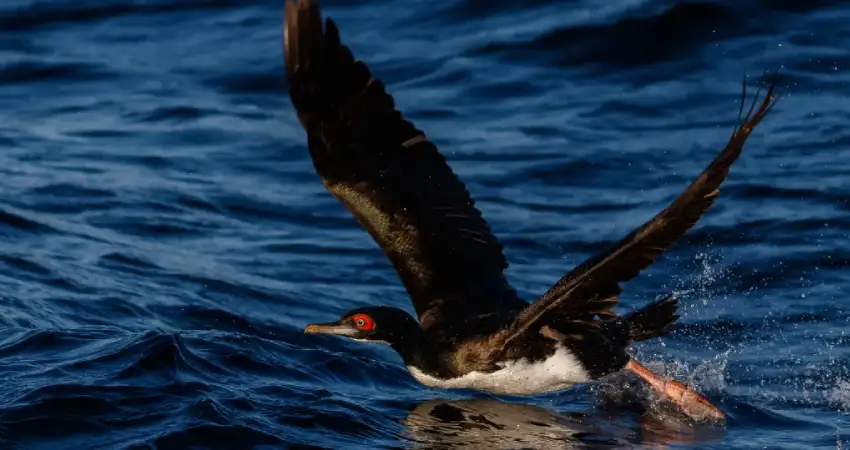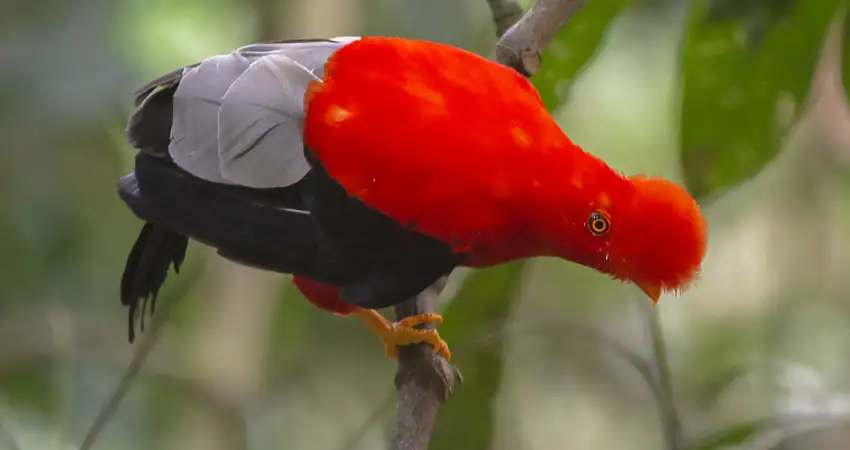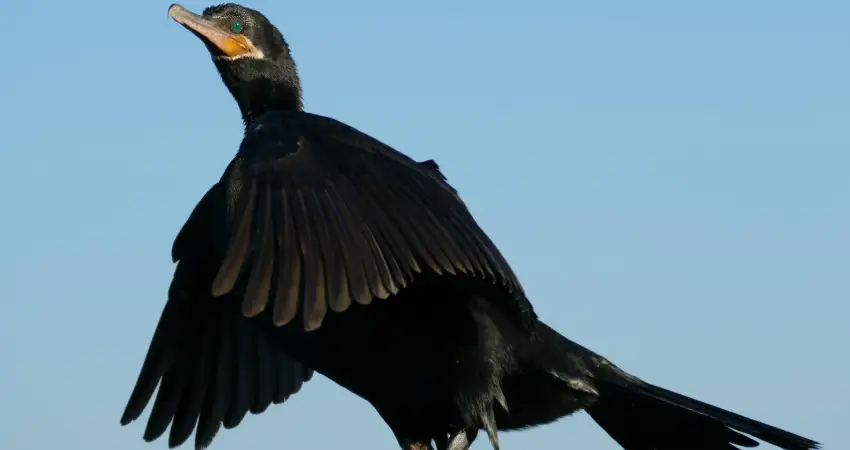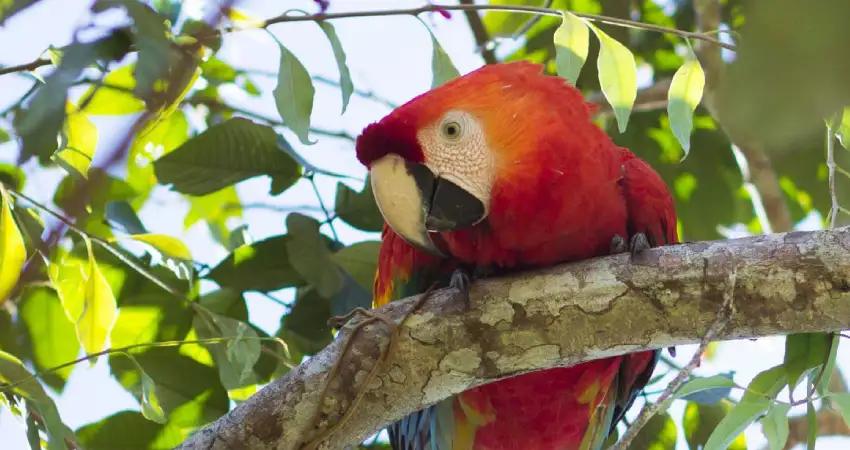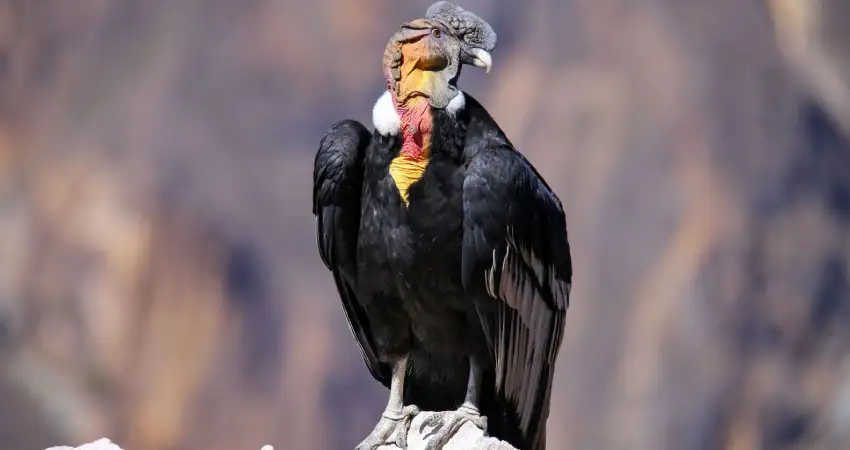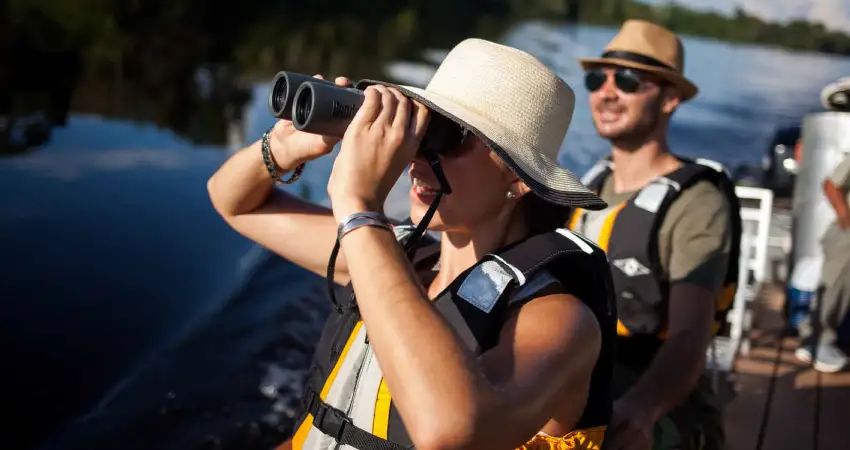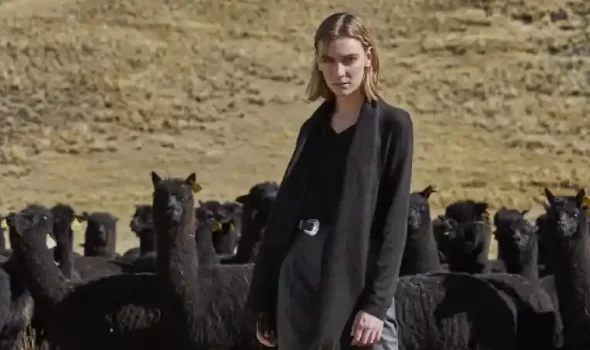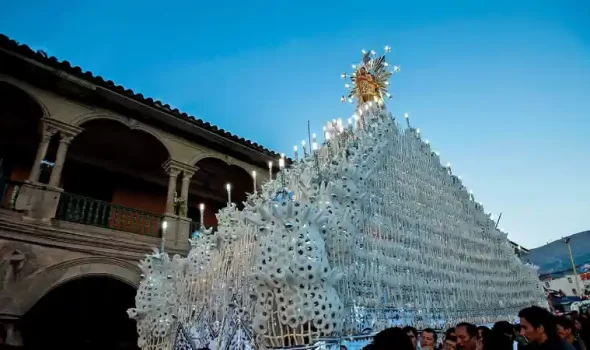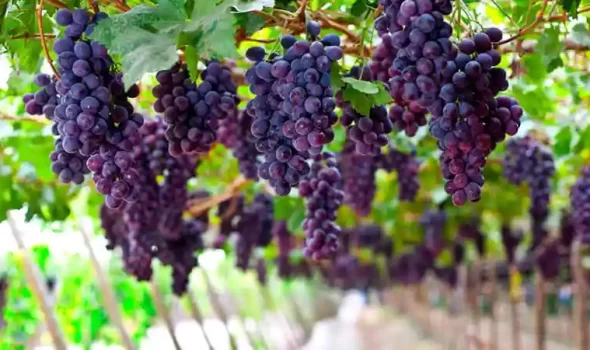1.- Bird watching in Peru
Peru has the greatest diversity of birds on the planet, with 1879 species of birds above Colombia and Brazil, becoming the world leader. The Union of Ornithologists of Peru accredits our country with the greatest diversity of birds in the world, by recognizing 19 new accredited species.
Thus, Peru is one of the best and most diverse countries for birdwatching in the world, as Theodore Parker III, American ornithologist said “Being here (for bird-enthusiasts) is like being a child visiting a huge store filled with new and fascinating toys.” This is why you must experience bird watching in Peru, because it can be a lifetime adventure and an inner learning knowledge.
Peru has many great birding spots where you can see some of the most beautiful birds in the world, as it is home to 20% of the world’s bird species, between migratory and resident species, of which about 100 of them are endemic. Most of these are endangered and only found in specific geographical areas of the country.
Therefore, our country is a great place to experience bird watching because of its natural and geographical diversity that exists, covering different landscapes, ecosystems and climates. But what are the best birdwatching places in Peru? And what are the most interesting birds you will find?
2 .- Best places to enjoy bird watching in Peru
There are three main bird watching routes in Peru, in the north to the department of Tumbes as the main focus; in the department of Lima in the center, and in the south, the department of Cusco. If you are ready to experience bird watching in Peru, then you should take into consideration the best places to enjoy bird watching in Peru considering the three main parts of the country:
2.1 .- Northern part
Traveling into the northern region of Peru there are many places where you can admire several species of birds, most of them endemic. Coast is an excellent region to see wildlife, especially in arid forest areas, for example around the cities of Trujillo and Chiclayo. In the nearby, there are other interesting locations where you can find birds from dry forests like Manglares de Tumbes National Sanctuary, Cerros de Amotape National Park, Tumbes National Reserve, and Angolo Hunting Reserve,
Moreover, in the region of San Martin, 615 species of birds were recorded in the mountains of humid cloud forests, piedmont forests, tropical forests, drylands and flooded forests. San Martin is the second destination birding tour in Peru, which includes the Alto Mayo Bird Trail, the Tarapoto-Yurimaguas Bird Trail, and the Huallaga Seasonal Dry Forest Bird Trail.
You can also visit the Pacaya Samiria National Reserve, located in the north Amazon Rainforest of the department of Loreto. This is one of the most pristine places in the Amazon and an exceptional point for bird watching in Peru, where you can see large species of parrots, the Wattled Curassow, the Great Potoo and the Amazonian Umbrellabird. Bird watching periods in the north are in June to July and from September to October.
Phalacrocorax Bougainvillii of the Central Coast of Peru
2.2 .- Central part
The center part of Peru congregates around 50 endemic birds, consequently, in the regions of Junin, Huanuco, and Pucallpa, within the Amazonian plain, there are many places for birdwatching. For example, Yanachaga-Chemillen National Park is located in the province of Oxapampa in the region of Pasco, where about 500 species of birds were recorded, in which golden-backed mountain tanager and the Junin grebe are the most important.
Other spots to see endemic birds in the central part of Peru are the Paracas National Reserve, Huascaran National Park, Huanaco Trail, Santa Eulalia Valley, Andamarca Valley via Santa Eulalia Valley, Guácharos Caves, and mountains, Marcapomacocha Lagoon, Ticlio Pass, Unchog Forest and Lake Junín. The most representative endemic birds from the central part of Peru are the Great Inca Finch, Black-breasted Hillstar, the Rufous Warbler Finch and the Flat-Tailed Warbler Finch.
As it is close to Lima, the Peruvian capital city, the central part of Peru is a solid destination for birdwatchers. June and July are the best months to do bird watching in the central part of Peru because it is the dry season in the Andes.
Andean Cock-of-the-Rock of the Southern Part of Peru
2.3 .– Southern part
The southern regions of Peru are the most privileged for birdwatching because more than 1000 bird species (one-tenth of the world’s entire species) live in the national parks and forest reserves of this part, for example, the Manu National Park, Tambopata National Reserve, Colca Canyon, Aguas Calientes-Valle de Mandor-Machu Picchu, Puerto Maldonado along the Tambopata River, Huacarpay Lake, Abra Málaga among others.
The best season to do birdwatching in the southern part of Peru is in the dry season, this is between April to November. August to September are the best months to see Guacamayos and Cocks of the Rocks, because in this season the clay licks and rock polls in the Amazon are fully visited by these species of birds.
We pointed out the best places to enjoy bird watching in Peru in order for you to make a decision based on your traveling time and interest for certain bird species and regions of the country.
3.- Bird species in Peru
As we pointed before, there are many species of birds based in Peru, more species than in North America and Europe territories. This is because more of them are endemic species, which means they cannot be found anywhere else in the world. Here we present some of the most important species from Peru.
Wattled Curassow from Pacaya-Samiria National Reserve
3.1 .- If you travel to Pacaya-Samiria National Reserve:
Then you probably spot the Wattled Curassow, a large game bird, with black plumage and a red beak. It is difficult to watch because of its distribution and the discriminated hunting. This is why they are cautious about human contact. Currently, this bird is in danger of extinction, because there are only about 300 birds remaining in Peru.
3.2 .- If you travel to Paracas:
Then you probably spot the Guanay Guano, a bird that usually lives mainly on the sea waters and rocky shores of the Peruvian coast and northern Chile. This bird has a grayish beak, with a red tint at the base of it. The Guanay Guano bird is one of the main guano producers, an effective fertilizer because of its high concentration of potassium, phosphate, and nitrogen.
Neotropic Cormorant of Manu National Reserve
3.3 .- If you travel to Manu National Park:
then you can spot the Cock of the Rock, a medium-sized bird that lives into the Andean cloud forests of South America. The male has stronger color hues, while the female boasts dark and earthy colors. Also, the male has a large, disc-shaped crest on his head that differentiates him from all other species. The Cock of the Rock has a fairly varied diet that consists of fruits, insects, reptiles and even small mice, and amphibians. Males attract females by their special singing and dancing.
Cock of the Rocks males are responsible for making the nest and incubating the eggs. Besides the Cock of the Rock, you can also find many other bird species like the Neotropic Cormorant, the Razor-billed Curassow, Casqued Oropendola, Spectacled Owl, Pavonine Quetzal, Black-spotted Bare-eye, Gouldi’s Antbird, Rufous-fronted Antthrush, Amazonian Pygmy-Owl, Spangled Cotinga, Andean Potoo, Cream-coloured Woodpecker, Musician Wren, Opal-crowned Tanager, among others.
Macaw of Tambopata National Reserve
3.4 .- If you travel to Tambopata National Reserve:
Then you probably see different species of macaws, along with other species of parrots and parakeets. The macaw is known by their large size, intense colors and loud voice that includes squawks, screeches, whistles, and other vocalizations. The diet of the macaws consists of different foods such as fruits, nuts, seeds, flowers, and especially clay from the licks of the Amazon basin, in order to neutralize the toxins from the unripe fruits and grains that they usually eat.
We recommend you to see: Dive into the peruvian jungle: Meet the best lodges in Tambopata
Andean Condor in Colca canyon
3.5 .- If you travel to Colca Canyon:, then you will see the Andean condors that come up very close as they fly down the canyon walls. This South American bird is one of the few species of condors of the vulture family on the American continent. Most of them are scavengers, feeding on the dead or decaying animals of Peru. Birds are very unique. The neck is almost hairless and red. Even his neck changes color depending on his mood. Most of the new species found in Peru are dull colored birds.
In Peru there are probably 30 to 50 new species that have not yet been discovered. Most are likely to be in hard-to-reach areas. So, if you love these beautiful birds and you want to experience bird watching in Peru, visiting our country is the best place for the activity. Contact us now and we will be more than happy to help you planning your bird watching adventure
Bird watching for beginners
4.- Bird watching in Peru for beginners
If you want to start birdwatching, Peru may be the perfect place. During a multi-day trip, you will definitely see hundreds of species of birds, many of which are difficult to identify. However, most of our tours have professional guides on site to help you. Remember that if you don’t have enough time to complete a trip that covers all the places in Peru we will give you an idea of the places available, which species you would see and some tips for your first incursion of bird watching for beginners:
-
- You must be very active. Sedentary people do not have many chances to spot birds, so you better start taking walks and hikes and also prepare your senses for the sound of the birds.
-
- As birdwatching is not a cheap activity, you should invest in some good binoculars to have a better view of the different species of bird you will encounter on your incursions.
-
- Hire a specialist tour guide to have the best direction and explanation by a local expert. This is the most important bird watching for beginners’ advice. We can help you with a specialist guide.
-
- Start walking in the early morning, because you will have more chances to see different types of birds. Usually, the birds come out after sleeping and come out in the morning to look for food and grain.
-
- Be patient. If you are not willing to be quiet and wait in a silent spot then many birds can escape from your view as they are timid and unsociable.
Amazing bird watching spots in Peru await you. In these places you will see some of the most amazing and interesting birds. This Andean country is rich in biodiversity and one of the best places for bird watching. So, if you really want to experience bird watching in Peru, Auri Peru Travel is happy to help with your travel plans around Peru. Reach out to us now to start planning an unforgettable Peruvian Adventure with Auri Peru!
“Bird watching in Peru: a lifetime adventure and an inner learning knowledge”




